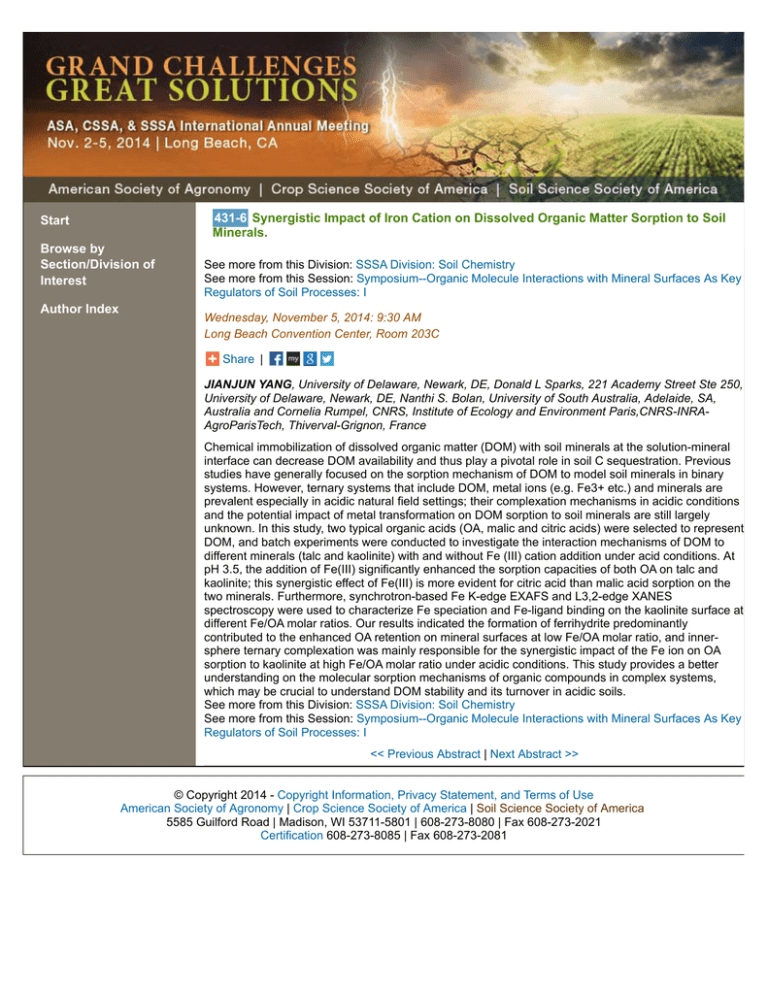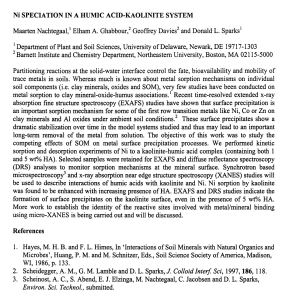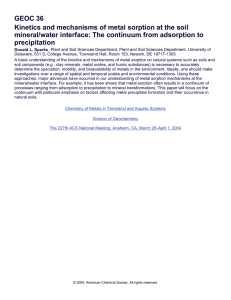431-6 Start Browse by Section/Division of
advertisement

431-6 Synergistic Impact of Iron Cation on Dissolved Organic Matter Sorption to Soil Minerals. Start Browse by Section/Division of Interest Author Index See more from this Division: SSSA Division: Soil Chemistry See more from this Session: Symposium--Organic Molecule Interactions with Mineral Surfaces As Key Regulators of Soil Processes: I Wednesday, November 5, 2014: 9:30 AM Long Beach Convention Center, Room 203C More Share | Share Share Share Share JIANJUN YANG, University of Delaware, Newark, DE, Donald L Sparks, 221 Academy Street Ste 250, University of Delaware, Newark, DE, Nanthi S. Bolan, University of South Australia, Adelaide, SA, Australia and Cornelia Rumpel, CNRS, Institute of Ecology and Environment Paris,CNRS-INRAAgroParisTech, Thiverval-Grignon, France Chemical immobilization of dissolved organic matter (DOM) with soil minerals at the solution-mineral interface can decrease DOM availability and thus play a pivotal role in soil C sequestration. Previous studies have generally focused on the sorption mechanism of DOM to model soil minerals in binary systems. However, ternary systems that include DOM, metal ions (e.g. Fe3+ etc.) and minerals are prevalent especially in acidic natural field settings; their complexation mechanisms in acidic conditions and the potential impact of metal transformation on DOM sorption to soil minerals are still largely unknown. In this study, two typical organic acids (OA, malic and citric acids) were selected to represent DOM, and batch experiments were conducted to investigate the interaction mechanisms of DOM to different minerals (talc and kaolinite) with and without Fe (III) cation addition under acid conditions. At pH 3.5, the addition of Fe(III) significantly enhanced the sorption capacities of both OA on talc and kaolinite; this synergistic effect of Fe(III) is more evident for citric acid than malic acid sorption on the two minerals. Furthermore, synchrotron-based Fe K-edge EXAFS and L3,2-edge XANES spectroscopy were used to characterize Fe speciation and Fe-ligand binding on the kaolinite surface at different Fe/OA molar ratios. Our results indicated the formation of ferrihydrite predominantly contributed to the enhanced OA retention on mineral surfaces at low Fe/OA molar ratio, and innersphere ternary complexation was mainly responsible for the synergistic impact of the Fe ion on OA sorption to kaolinite at high Fe/OA molar ratio under acidic conditions. This study provides a better understanding on the molecular sorption mechanisms of organic compounds in complex systems, which may be crucial to understand DOM stability and its turnover in acidic soils. See more from this Division: SSSA Division: Soil Chemistry See more from this Session: Symposium--Organic Molecule Interactions with Mineral Surfaces As Key Regulators of Soil Processes: I << Previous Abstract | Next Abstract >> © Copyright 2014 - Copyright Information, Privacy Statement, and Terms of Use American Society of Agronomy | Crop Science Society of America | Soil Science Society of America 5585 Guilford Road | Madison, WI 53711-5801 | 608-273-8080 | Fax 608-273-2021 Certification 608-273-8085 | Fax 608-273-2081


